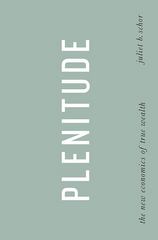Question
How does the expected rate of return on an asset affect its desirability?Part 2 A. They are inversely related - the higher the expected return,
How does the expected rate of return on an asset affect its desirability?Part 2
A.
They are inversely related - the higher the expected return, all else equal, the less attractive the asset.
B.
They are directly related - the higher the expected return, all else equal, the more attractive the asset.
C.
They are unrelated - expected return does not affect an asset's desirability.
Part 3How does the level of risk affect an asset's desirability?Part 4
A.
They are inversely related - the higher the level of risk, all else equal, the less attractive the asset.
B.
They are directly related - the higher the level of risk, all else equal, the more attractive the asset.
C.
They are unrelated - an asset's level of risk is unrelated to its desirability.
Part 5How does the level of liquidity affect an asset's desirability?Part 6
A.
They are directly related - the more liquid the asset, all else equal, the more desirable the asset.
B.
They are inversely related - the more liquid the asset, all else equal, the less desirable the asset.
C.
They are unrelated - liquidity does not affect an asset's desirability.
Money is said to be neutral if:
A.
if a change in the money supply changes the price level and other nominal variables but has no effect on real variables.
B.
if a change in the money supply does not change the price level or other nominal variables.
C.
if a change in the money supply changes the price level and all real variables proportionately.
D.
if a change in the money supply does not change the level of full-employment output.
Part 2After prices adjust, money is neutral in the IS-LM model because:
A.
any shift in the aggregate demand curve caused by the change in the money supply is offset by a shift of the aggregate supply curve.
B.
the shift in the LM curve due to the change in the money supply is matched by an equal shift of the IS curve.
C.
any change in money supply that shifts the LM curve is finally matched by a proportional change in the price level that shifts the LM curve to its original position.
D.
when the economy returns to the full-employment level, there is no net change in the price level.
Part 3Regarding neutrality of money:
A.
Keynesian economists believe that money is neutral in both the short run and the long run, but classical economists believe that money is neutral only in the long run but not in the short run.
B.
classical economists believe that money is neutral in both the short run and the long run, but Keynesians believe that money is neutral only in the long run but not in the short run due to sluggish adjustment of the price level in the short run.
C.
classical economists believe that money is neutral in both the short run and the long run, but Keynesians believe that money is neutral only in the short run but not in the long run.
D.
both classical and Keynesian economists agree that money is neutral only in the long run but not in the short run.
Step by Step Solution
There are 3 Steps involved in it
Step: 1

Get Instant Access to Expert-Tailored Solutions
See step-by-step solutions with expert insights and AI powered tools for academic success
Step: 2

Step: 3

Ace Your Homework with AI
Get the answers you need in no time with our AI-driven, step-by-step assistance
Get Started


